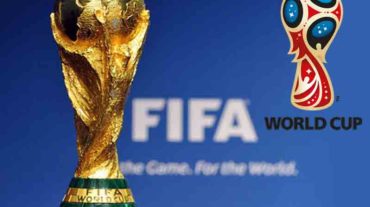The Red Bull Ring is a circuit located in the town of Spielberg, with about 5,000 inhabitants.
It is the circuit with the highest average speed in the championship, with 183.2 km / h.
The Austrian track has been completely overhauled in recent years to meet the current safety regulations of the International Motorcycling Federation and the protocols of the championship organizer, Dorna.
Although the creation of the Austrian circuit dates back to 1969 and at that time it was called the Österreichring, and it hosted great prizes for many years.
But the new safety regulations left it out of the calendar until 1996, when its remodeling began and in 2011 it became active again under the current name, Red Bull Ring.
The Austrian layout stands out for its privileged location where the presence of forests in its surroundings and its new symbol, the figure of a bull, the logo of the well-known energy drink brand stands out.
In the design section, the Red Bull Ring Circuit is 4.3 km long and is made up of 10 curves, 8 to the right and 2 to the left. The Austrian track has a slope from its lowest to the highest part of 65 meters with a maximum incline of 12% and a steeper descent of 9.3%. The main straight is 626 meters long.
The first international races held in the region were held in 1957 at the Zeltweg military base, just 5 kilometers from the current circuit.
Built in 1969 with a length of 5,911 meters, the original name of the track was Österreichring, which means “Circuit of Austria”.
In 1996 it was renamed A1-Ring when the telephone provider A1 paid for most of a remodeling that allowed it to host the Motorcycle World Championship in 1996 and 1997.
The person in charge of carrying out the work was the German Herman Tilke, for whose study they have past tracks such as MotorLand Aragón, Sepang –in Malaysia– or the main grandstand of the Barcelona-Catalunya circuit.
The six races that were held in those two editions (two 125cc, two 250cc and two 500cc) were won by Honda riders.
The 1996 500cc test saw a young Álex Crivillé, in his second season with the Repsol Honda team, snatch the victory from Mick Doohan on the last lap.
Red Bull acquired the track in 2010 and major safety changes were made, allowing it to return to Formula 1 in 2014 and MotoGP in 2016.
The Austrian track is by far the highest altitude circuit on the calendar of the entire calendar. Specifically, it is 677 meters above sea level (it is followed by MotorLand Aragón, but already 381 meters above sea level).
The difference between the highest and the lowest point of the circuit is 65 meters.
It is the circuit with the fewest curves on the World Championship calendar, with a total of 10.
It is the circuit with the highest average speed in the championship, with 183.2 km / h. They are followed by Buriram and Phillip Island, with 177.9km / h and 176.5km / h respectively.
Paradoxically, the top speed of the track is one of the lowest on the calendar: 316.7 km / h, due to the fact that it has one of the shortest straights of the season (only the Assen, Misano and Jerez straights are shorter) .
In the season of its return, the Austrian event received the award for the best Grand Prix of the year.
In 2016, the Austrian Grand Prix welcomed 216,000 spectators throughout the weekend, being the one with the highest number of people throughout the season.
It has the only press room of all the championship circuits that circuit offers breakfast, lunch and dinner for accredited journalists.
The circuit is open 365 days a year and in winter it hosts snow events, such as cross-country skiing, ice skating or snowmobile races, among others.
The enclosure where the track is located has several tracks inside, to practice trials, off-road for cars or motorcycles or karting. In addition, it also includes a driving school.
The first Austrian Grand Prix was held in 1971 at the Salzburgring circuit, which hosted a total of 22 editions.
In that event, Giacomo Agostini won the 500cc with more than a lap of advantage over the second classified, Keith Turner.
That same day Agostini also won the 350cc race, while the winners in the rest of the categories were: Silvio Grassetti (MZ) in 250cc, Ángel Nieto (Derbi) in 125cc and Jan de Vries (Kreidler) in 50cc.
The last time a Grand Prix was held at the Salzburgring was in 1994, with Mick Doohan winning the 500cc race at an average speed of over 194 km / h.
Due to the high speeds that were reached and for safety reasons, the circuit was considered too dangerous to continue hosting a Grand Prix.
Italian driver Franco Uncini suffered an accident while racing in the 350cc category at the 1977 Austrian GP and saved his life thanks to the rapid intervention of the mobile clinic, in the first GP in which they began to provide their services in the circuits.
The American film director and producer Steven Spielberg owes his surname to his Hungarian descendants who lived in the Austrian town in the 17th century.
The track in detail
A special feature of the Red Bull Ring are the differences in altitude and the unique overview of the route.
Circuit name: Red Bull Ring
Length of the route: 4,318 km
Altitude: 677 m
Difference in altitude: 65 m
Routing: clockwise
Length of the start / finish line: 626 m
Maximum gradient: 12%
Maximum gradient: 9.3 %
Course width: 12-13 m
Last winner: Andrea Dovizioso (2019)




